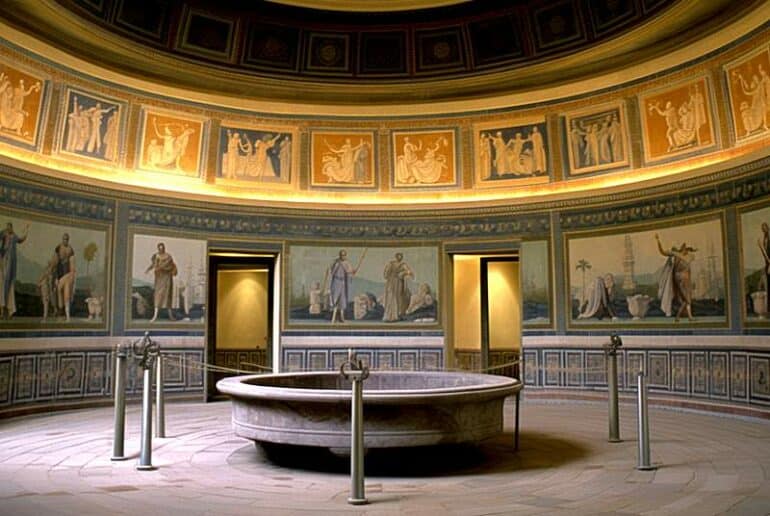The Laconium: a fascinating legacy of ancient bathing culture
The history of human civilization is rich in discoveries, innovations and cultural practices that have enriched and shaped people’s lives. One of these practices, which has survived in various forms to this day, is the art of bathing and personal hygiene. At the center of this tradition is the laconium, a fascinating relic of ancient bathing culture.
The Sudatorium: origin and meaning
The word “sudatorium” comes from the Latin word “sudare”, which means “to sweat”. In ancient baths, it referred to a steam sweat bath. These baths were not only places of purification, but also of social interaction, relaxation and well-being. The hypocaust, a system of cavities and channels under the floor, heated the air of the room in the sudatorium. A perfusor (steam generator), often a slave, humidified the hot stones to produce steam that filled the room and gave bathers an intense sweating experience.
Laconium: the Spartan specialty
The laconium, also called laconium, was a special form of steam bath. The name derives from “Lacedaemonius”, which means “Spartan”. It is believed that this was the only form of warm bath accepted by the Spartans. Unlike other Greek city-states known for their luxurious bathing habits, the Spartans were famous for their asceticism and minimalism. The laconium reflected this Spartan ethic. It was a simple, often semicircular or circular room heated by underfloor heating and a charcoal basin. In the center of the room was a shallow basin of water, the labrum, in which bathers could shower to cool off.
The cultural and social importance of the laconium
The laconium was more than just a place to sweat. It was a place for reflection, meditation, and social interaction. In the ancient world, baths were not only places of physical cleansing, but also centers of social and cultural life. Philosophers, politicians, and citizens met in these baths to discuss, do business and maintain relationships.
The laconium, with its intense heat and steam, provided the perfect setting for such interactions. The heat promoted blood circulation, relaxed muscles, and opened pores. This process of purification was not only physical, but also psychological and spiritual. Many believed that sweating in the Laconium cleared the mind and healed the body.
The Laconium in the modern world
The tradition of the Laconium lives on in the modern world in various forms. Many modern spas and wellness centers offer “laconium baths” or “laconium saunas” inspired by the ancient practice. These modern interpretations often combine the traditional elements of the laconium with modern technology and design.
Final thoughts
The laconium is a fascinating example of how ancient traditions and practices can find their way into the modern world. It reminds us that while times change, the human need for relaxation, purification, and community remains constant. It is a testament to the wisdom and innovation of our ancestors, and proof that some things remain unchanged despite the progress of time.
In a world that is becoming increasingly hectic and stressful, the Laconium provides a much-needed oasis of calm and relaxation. It reminds us to take time for ourselves, to relax and take care of our body and mind. It is a legacy from ancient times that is still relevant and valuable today.

